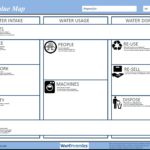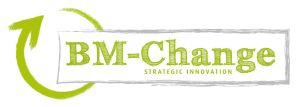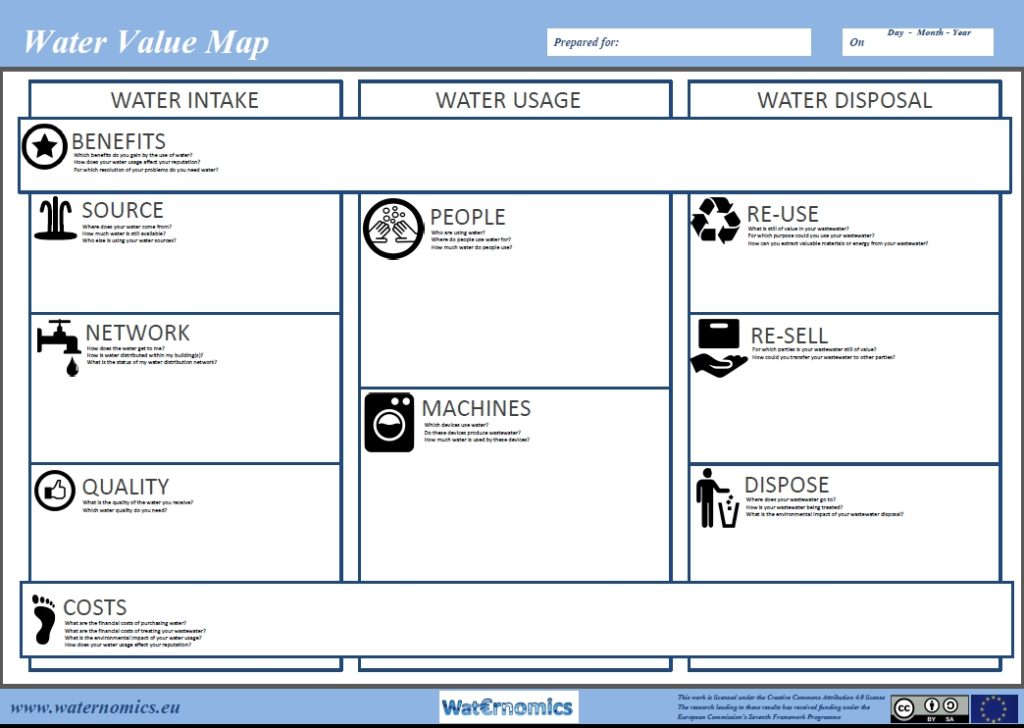 The starting point for developing any water conservation strategy should be a shared understanding of water usage and water related activities. Before starting one should ask itself three basic questions:
The starting point for developing any water conservation strategy should be a shared understanding of water usage and water related activities. Before starting one should ask itself three basic questions:
1. Why do I use water?:
2. Where does my water come from?
3. Where does my water go to?
Based on the answers of these questions, one can determine which area to focus on when start taking water conservation measures. The Water Value Map helps addressing these questions and helps with keeping an overview of all water conservation measures and their relations.
The Waternomics Water Value Map
The Water Value Map consists of ten building blocks divided over three different functional areas, being Water Intake, Water Usage and Water Disposal as shown in Figure 1.
Ten building blocks
The ten building blocks of the Water Value Map are:
Benefits: Describes the direct and indirect benefits, financial and non-financial, from water usage or trade
Source: Shows the origin of the water used
Network: Describes the infrastructure, pumps and pipes, required to move the water from its source to its point of use. Especially leakages and inefficient pumps and valves cause loss of water and energy.
Quality: The required and perceived level of quality of the incoming water
People: Lists all people that use water. Describes also when and why people use water.
Machines: List all machines that use water such as washing machines or cooling machines.
Costs: Describes the cost structure for acquiring, using and disposing water. Also indirect costs like energy usage should be taken into account.
Re-use: Wastewater that can be used for other applications within the household or organisation
Re-sell: Wastewater that cannot be re-used but that still has value for external parties e.g. because of temperature or specific in the water
Dispose: Wastewater that is being disposed and is of no value to anyone
Common understanding about water usage
By providing easy to understand symbols and terminology, people with different backgrounds and knowledge levels, can quickly start discussing water related issues and exchanging knowledge, without being hindered by lingual obstacles.
The map can be used by households and organisations to get an overview of water costs and benefits, to investigate measures for reducing water consumption and to identify knowledge gaps in water usage. The focus is on direct water usage within an organisation or household.
A full size version of the Waternomics Water Value Map can be downloaded here.
This post was originally published on http://waternomics.eu

